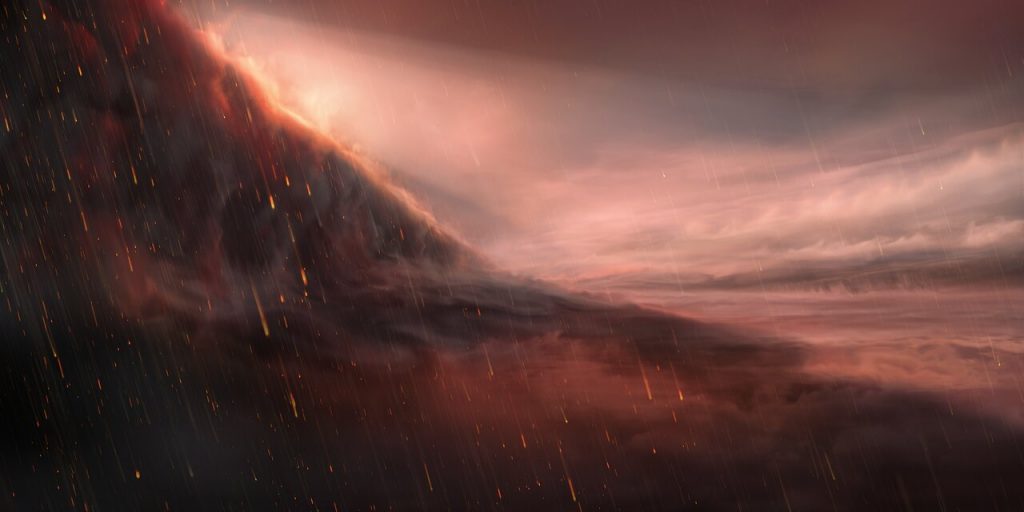
If you’re not a fan of rainy days, you will really not like the weather on this particular planet. An exoplanet named WASP-76b located within the Pisces constellation has an extraordinarily extreme atmosphere; so much so that super-hot molten iron rains from the sky. But don’t expect to be able to visit it anytime soon: it is located roughly 390 light-years away.
The crazy weather on the planet is due to the way it rotates around its parent star. Similar to how the Moon orbits the Earth, WASP-76b is tidally locked. This means it takes as long to rotate around its axis as it does to go around the object its orbiting. Because of that, one side of WASP-76b is always heated by its star and the other side is left in eternal darkness. The “sunny” side is blasted with hot temperatures that are estimated to be around 2,400°C. Temperatures at these extreme levels can vaporize metals. Strong winds that swirl around these planets take iron in vapor form and swirl it over to the cooler always-dark side; much like water rain precipitates out of water vapor when it cools on Earth, iron droplets condense out of the iron vapor, raining iron there.
The discovery of the unique rain came from ESPRESSO which stands for the Echelle Spectrograph for Rocky Exoplanets and Stable Spectroscopic Observations. Built by the Astronomy Department of the University of Geneva with help from teams in Portugal, Italy, Switzerland, and Spain, the instrument on ESO’s Very Large Telescope allowed for the discovery. ESPRESSO was originally designed to hunt Earth-like planets around Sun-like stars.